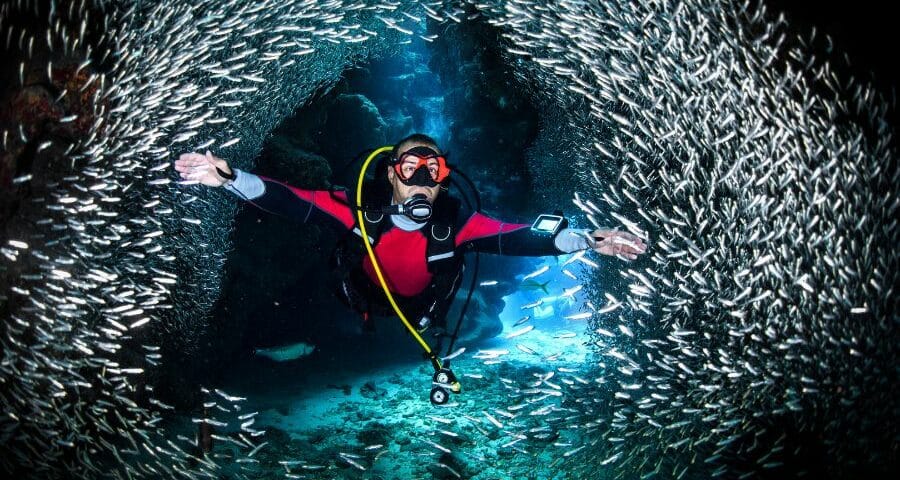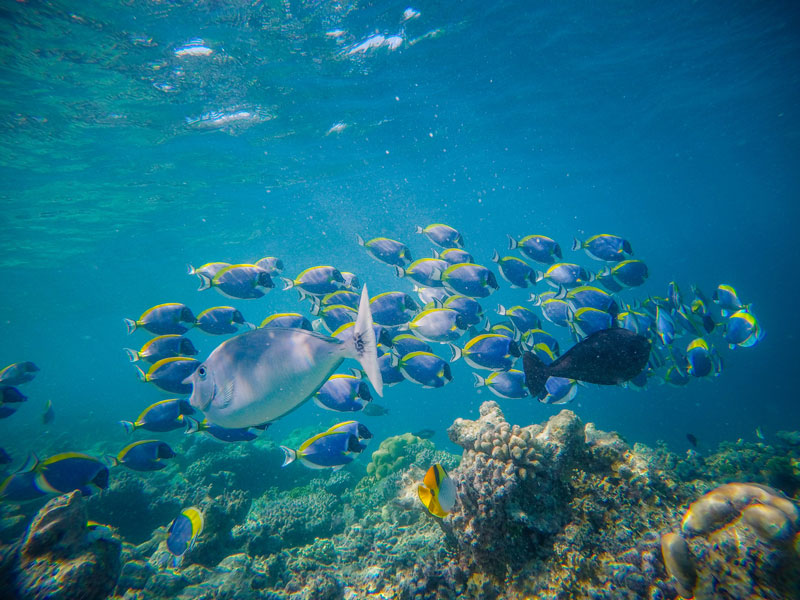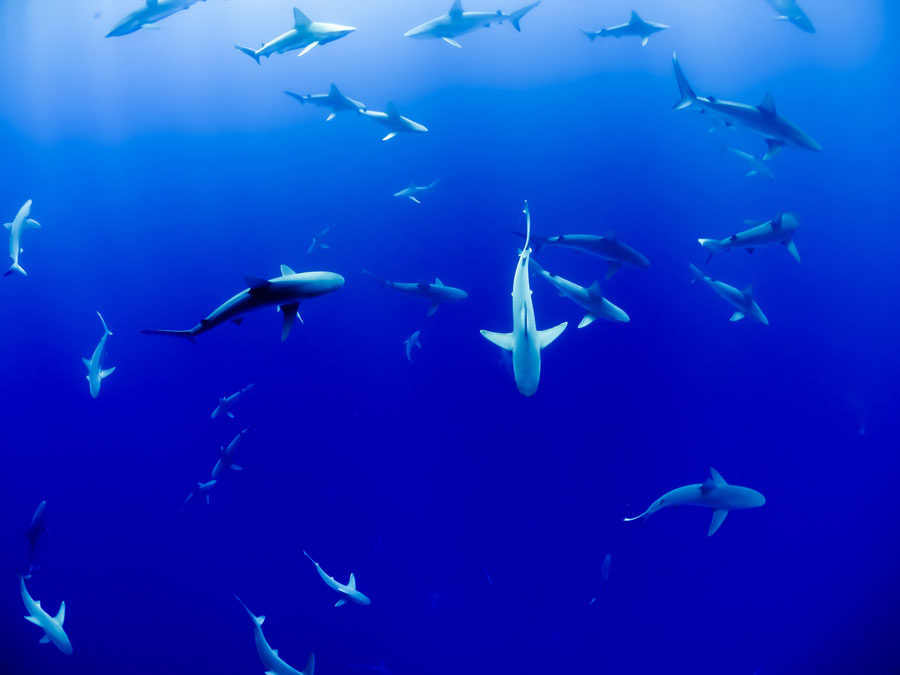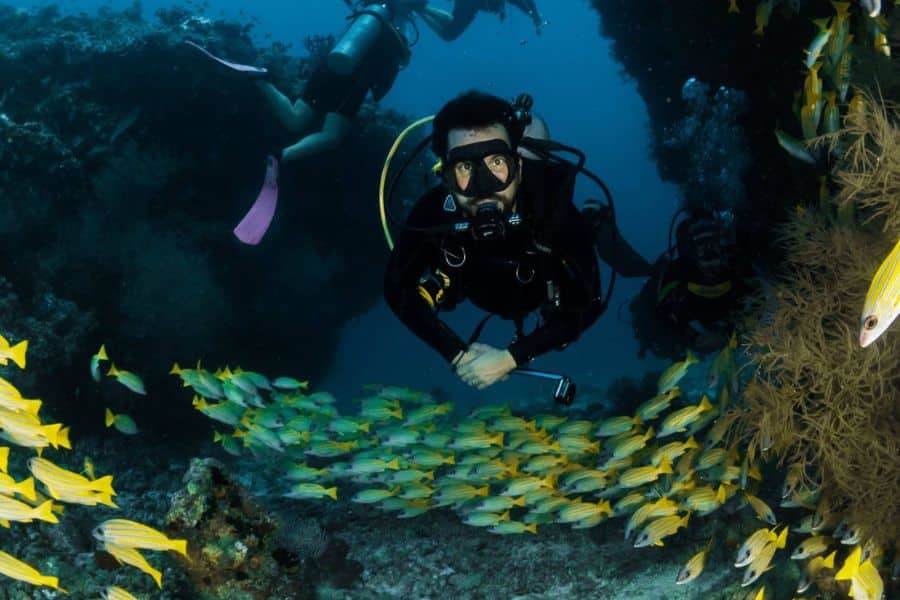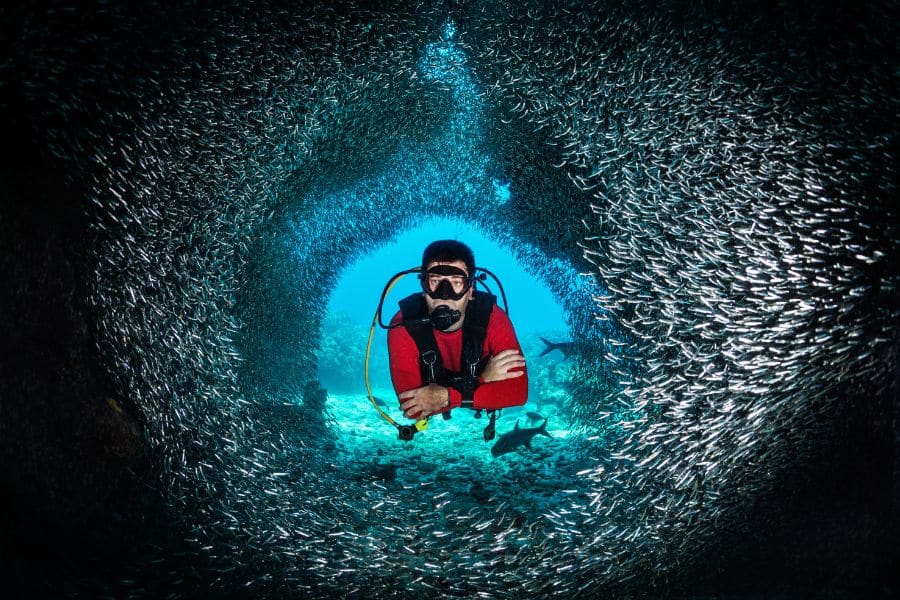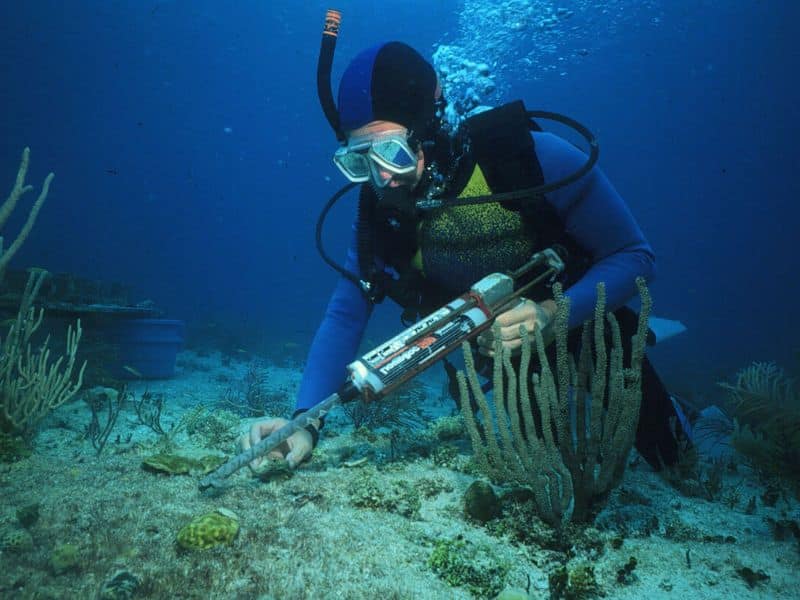4. Names For Different Schools of Fish
Ok, we already know that a school of fish is a collection of marine animals that remain together, but this is not the only way to refer to them. The fact is that in the English language, we have different collective names for marine animals. Let’s know some of them.
A School of Barracudas Is Called a “Battery”
Watching a barracuda on a dive in the Caribbean Sea is normal. This is because they love to live near the coral reef and seagrasses. What is not so frequent is to see them in groups swimming together, and adults are usually quite solitary fish. However, they occasionally form groups for swimming and hunting. If you see one, you will know that this school of fish is called a “battery”.
A Group of Swordfish Is a “Flotilla”
When the school of fish is a group of swordfish, they are called “flotilla”. The word “flotilla” is a diminutive of the Spanish “flota” and means little naval fleet. It makes sense if we think in terms of the swordfish’s dorsal fin so similar to the sail of a vessel.
A School of Cod or a “Lap” of Cod
Although they are the kings of the North Sea, cod also have their collective name in English. Yes, a school of fish formed by gathering cod is a “lap”. One of the ways to fish for cod is with purse seine fishing. That is, to lap the net around the school of fish to catch it. Could this be the reason for this name?
A Group of Herring Is an “Army”
Herring are silver-colored fish that form large groups. We are not quite sure why this school of fish is called an “army”, although they move in unison like a battalion under the order Right Face, Fall out!”
Collective Names Based on the School of Fish’s Movements
According to PADI, there are some collective marine animal names related to the school of fish’s movement.
For example, a group of salmon is called a “run” of salmon. This name refers to the upstream movement of these fish. Dogfish move as a mass. This is why a school of these fish is called a “troop” of dogfish.
NAO researchers found the largest aggregation of eels ever recorded in the abyssal depths of the ocean. They named them a “swarm” of eels because they seemed to move with the collective intelligence of bees. Schools of eel are also called a “bed” of eel or “fry” of eel.
A Group of Sharks Is a Shiver
If there is a school of fish in which a scuba diver is interested, it is a “shiver” of sharks. Yes, that’s the name of a group of these marine animals. What do you think is the reason? Is it because of the emotion of seeing these stunning fish? Is it because of the undeserved bad reputation? Write your comment on Facebook, and share it with us.
We have considered some names for different schools of fish and marine animals, but there are many more: a bunch of sardines is a “family” meanwhile, a gathering of manta rays, spotted rays, or stingrays is a “fever.” You can find a “smack” of jellyfish, a “risk” of lobsters, and a “turmoil” of porpoises and on the sea beds, crabs meet up as a “cast” and “consortium.” Do you know another name for a school of fish?




